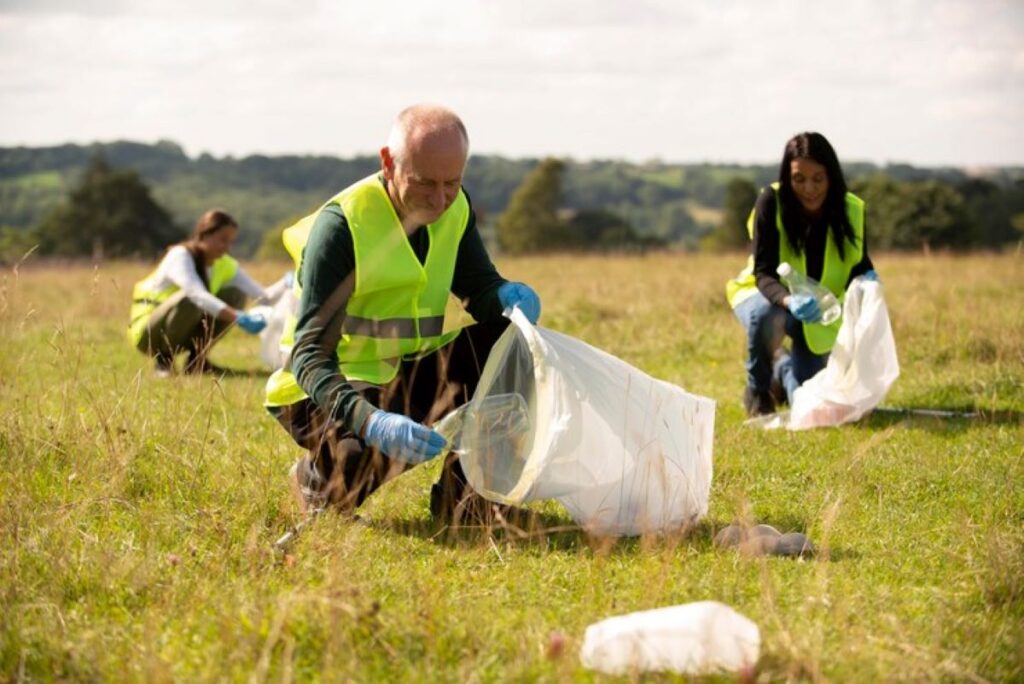Tree pruning is an essential maintenance practice that promotes healthy growth and improves the overall aesthetic of trees in both residential and commercial landscapes. However, the process generates substantial green waste that can be challenging to manage. This is where green waste removal services come into play, offering an eco-friendly solution to handle the remnants of your landscaping efforts. This article delves into the myriad benefits of utilizing green waste removal services specifically in conjunction with tree pruning.
Understanding Green Waste Removal Services
What is Green Waste?
Green waste refers to organic materials that are typically generated from garden and landscaping activities. This includes clippings from trees and shrubs, leaves, and other biodegradable materials. Green waste is often rich in nutrients, making it valuable for composting or mulching, but it can also create unsightly debris and potential hazards if not disposed of correctly.
Improper disposal of green waste can lead to various issues, such as pest infestations, diseases spreading among plants, or even local ordinance violations depending on community regulations. Thus, it becomes imperative to address this waste effectively, ensuring it is repurposed or processed in an environmentally responsible manner. Additionally, green waste removal service can contribute to controlling greenhouse gas emissions if it decomposes in landfills, highlighting the importance of utilizing dedicated services that focus on environmentally friendly disposal methods.
The Role of Green Waste Removal Services
Green waste removal services specialize in collecting, processing, and recycling organic waste generated from gardening and landscaping tasks. These services play a crucial role in promoting sustainable practices and reducing landfill waste.
Using professional green waste removal services not only ensures proper disposal but also provides many other benefits including convenience and expertise. Service providers typically offer a variety of options, from curbside pickup to full yard clean-up, catering to the specific needs of homeowners and businesses alike. Many of these services also educate clients on best practices for managing green waste, such as how to properly separate recyclable materials and the advantages of composting, which can further enhance soil health and reduce the need for chemical fertilizers.
Moreover, some green waste removal services have begun to incorporate innovative technologies to streamline the collection and processing of organic materials. For instance, many companies now utilize specialized trucks equipped with compactors to optimize space and reduce the number of trips needed to transport waste to processing facilities. This not only improves efficiency but also minimizes the carbon footprint associated with waste collection. Additionally, by partnering with local farms or community gardens, these services can help convert collected green waste into nutrient-rich compost that supports local agriculture, creating a circular economy that benefits both the environment and the community.
The Importance of Tree Pruning
The Science Behind Tree Pruning
Tree pruning is more than just a cosmetic procedure; it involves a deep understanding of tree biology and growth patterns. By selectively removing branches, you can improve air circulation, enhance sunlight penetration, and promote the healthy growth of your trees. This science-based practice helps trees to focus their energy on vital areas, improving their resilience against diseases and pests.
Furthermore, pruning can shape the structure of a tree, preventing branches from becoming too heavy or weak, which may lead to breakage under heavy winds or snow loads. In essence, correctly executed pruning serves to fortify a tree’s health while preserving its beauty. Understanding the timing of pruning is also crucial; for instance, late winter or early spring is often the best time for many species, as it allows trees to heal quickly before the growing season begins.
Moreover, different species of trees have unique growth habits and requirements. For example, flowering trees may require specific pruning techniques to encourage blooms, while fruit trees benefit from pruning that enhances fruit production. By tailoring your pruning approach to the specific needs of each tree type, you can maximize their potential and ensure they thrive in your landscape.
How Regular Pruning Benefits Your Trees
Regular pruning offers a multitude of benefits to trees, helping to maintain their health and vitality over the years. One key advantage is the reduction of overcrowded branches, which promotes better circulation and sunlight exposure. This is vital for photosynthesis and overall tree vigor.
Additionally, regular pruning helps in reducing the risk of diseases by eliminating dead or infected branches that can harbor pests. Furthermore, it contributes to safety by removing potentially hazardous limbs that may fall during storms or strong winds, thereby protecting properties and individuals. Beyond safety, well-pruned trees can also enhance the aesthetic appeal of your landscape, creating a more inviting and harmonious environment.
Another significant benefit of regular pruning is the encouragement of new growth. When older branches are pruned, it stimulates the tree to produce new shoots, which can lead to a fuller and more vibrant canopy. This rejuvenation process not only improves the tree’s appearance but also its overall health, as younger branches are typically more vigorous and less susceptible to disease. Additionally, healthy trees can provide better shade, improve air quality, and even increase property values, making regular pruning a wise investment for any property owner.
Combining Tree Pruning with Green Waste Removal
The Process of Green Waste Removal After Pruning
Once tree pruning is complete, the resulting green waste requires immediate attention to prevent clutter and potential harm to the landscape. Green waste removal services typically follow a comprehensive process to manage this waste efficiently:
- Assessment: After pruning, the service will evaluate the amount and type of green waste generated.
- Collection: Professionals will collect the waste, often including branches, leaves, and other organic materials.
- Transport: The collected materials are then transported to a designated facility for processing.
- Processing: At the facility, the green waste is either composted, recycled, or transformed into mulch, thus minimizing landfill contributions.
Why Choose Green Waste Removal for Your Pruned Trees
Opting for green waste removal services post-pruning simplifies the entire tree care process. It alleviates the burden of managing heavy branches and debris, freeing up your time for other important tasks. Moreover, professionals equipped with the right tools can handle large quantities of waste safely and swiftly.
Choosing a green waste removal service also aligns with environmentally responsible practices. Instead of throwing organic waste away, the disposal process emphasizes recycling and reusing materials, therefore supporting sustainability efforts in your community. This not only benefits the individual homeowner but also contributes positively to the environment at large.
Additionally, engaging with green waste removal services can foster a sense of community responsibility. Many local services are committed to eco-friendly practices and often collaborate with community gardens and parks to provide compost or mulch made from the collected green waste. This not only enriches local soil but also helps in creating a healthier ecosystem, promoting biodiversity and enhancing the beauty of public spaces.
Furthermore, green waste removal can also be an educational opportunity. Many companies offer insights into the benefits of proper waste management and sustainable practices, helping homeowners understand the importance of maintaining their landscapes responsibly. This knowledge empowers individuals to make informed decisions about their gardening and landscaping choices, ultimately leading to a more sustainable approach to tree care and landscaping in general.

Environmental Impact of Green Waste Removal
Green Waste Removal and Sustainability
The significance of green waste removal services extends beyond immediate practicality; they fundamentally support sustainable landscape management. By diverting organic waste from landfills, these services reduce greenhouse gas emissions that result from decomposition.
Moreover, the proper recycling of green waste can lead to the production of compost and mulch, which can be used to enrich soil, promote healthy plant growth, and conserve water. Utilizing these byproducts effectively enhances the ecosystem and bolsters biodiversity within local environments. This process not only helps in creating nutrient-rich soil but also encourages the growth of beneficial microorganisms that play a crucial role in maintaining soil health. As communities embrace composting and mulching, they contribute to a circular economy where waste is transformed into valuable resources, thereby minimizing the need for synthetic inputs and fostering a more resilient agricultural system.
How Green Waste Removal Contributes to a Healthier Environment
Green waste removal plays an integral role in fostering a healthier environment. By prioritizing eco-friendly disposal and recycling methods, communities can enhance soil health, reduce the need for chemical fertilizers, and effectively manage their landscapes.
In the long run, consistent green waste removal helps maintain cleaner neighborhoods and parks, thereby encouraging outdoor activities and enhancing community aesthetics. Additionally, it protects wildlife habitats by ensuring that organic debris does not accumulate in detrimental ways. This practice also supports urban wildlife, as properly managed green spaces can provide essential habitats for various species, including pollinators like bees and butterflies. Furthermore, engaging local residents in green waste initiatives can foster a sense of community responsibility and environmental stewardship, leading to greater awareness of sustainability practices and encouraging individuals to adopt eco-friendly habits in their daily lives.
See Also: Green Waste Removal Sydney: How to Clear Your Garden Waste
Cost and Time Efficiency of Green Waste Removal Services
Evaluating the Cost of Green Waste Removal
Investing in professional green waste removal may initially seem like an added expense; however, it offers significant long-term value. Many service providers operate on a flexible pricing structure, enabling clients to select services that meet their specific needs and budgets.
Considering the labor and time involved in self-managed waste disposal, the cost of hiring professionals often pales in comparison. Additionally, services can save homeowners from potential fines or property damage caused by mishandling green waste, highlighting their cost-effectiveness. Many companies also offer bundled services that include not just waste removal, but also yard maintenance and landscaping, which can further enhance the value of the investment. This comprehensive approach allows homeowners to streamline their outdoor upkeep while ensuring that their green waste is disposed of responsibly.

Saving Time with Professional Green Waste Removal
Time is a precious commodity, especially for homeowners juggling numerous responsibilities. By employing professional green waste removal services, individuals can reclaim valuable hours spent on yard clean-up and disposal tasks.
Moreover, professional teams operate with efficiency and expertise, ensuring that green waste is removed promptly and correctly, allowing homeowners to enjoy their landscaped spaces without the hassle of ongoing maintenance. This not only provides convenience but also peace of mind, as you can rest easy knowing that your green waste is being handled in an environmentally conscious manner. Additionally, many providers utilize eco-friendly practices, such as composting and recycling, which contribute to a more sustainable community. By choosing these services, homeowners not only save time but also play a part in reducing landfill waste and promoting a healthier environment.
Furthermore, the expertise of these professionals often extends beyond mere removal; they can offer valuable insights into proper waste management and landscaping practices. This guidance can help homeowners make informed decisions about their gardens and outdoor spaces, leading to improved aesthetics and health of plants. With their knowledge, these experts can suggest the best times for pruning or planting, ensuring that your landscape thrives while minimizing waste generation in the future.

